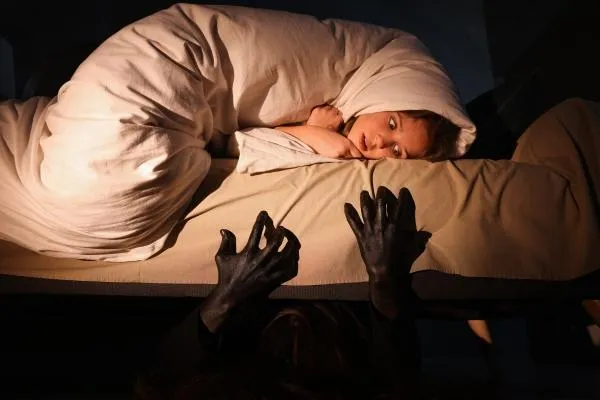
Best Daycare in Carrollton Georgia
Give us a call @ (678)601-3067
Growing Hearts and Hands
At Growing Hearts and Hands, we believe that every child deserves a nurturing environment where they can thrive academically, socially, and emotionally. Our state-of-the-art facilities and dedicated educators are committed to providing personalized learning experiences tailored to each child's unique needs.

Why Choose Growing Heart and Hands?
Customized Learning Plans:
We develop individualized learning plans that cater to your child's specific learning style and pace, ensuring optimal growth and development.

Qualified and Caring Educators:
Our team comprises certified professionals trained in early childhood education, CPR, and first aid, dedicated to fostering a safe and supportive learning environment.

Safe and Engaging Environment:
Our secure facilities are equipped with interactive play areas that encourage exploration and creativity, promoting holistic development.

Give us a call @ (678)601-3067
Schedule a Tour Today
Experience firsthand the vibrant learning community at Growing Hearts and Hands. We invite you to schedule a tour and discover how we can partner with you in your child's educational journey.


Learning for your Pre-Schooler
Three-year-olds are able to solve more and more problems, figure out unique ways to do something, and want to find out why – a lot! Learning Beyond helps you become a strong model, allowing children time to try and work through challenges while you ask important questions or provide support to children’s learning. Children’s skills in all developmental areas grow with these continued opportunities to be actively engaged in their learning and trusted as a learner. Learning Beyond provides quarterly benchmarks to help you stay focused on age-appropriate growth and excited learners.
Give us a call @ (678)601-3067

What to Do If Your Child Has Night Terrors: A Guide for Parents
What to Do If Your Child Has Night Terrors: A Guide for Parents
As a parent, waking up to the sound of your child screaming, thrashing, or appearing terrified in their sleep can be deeply distressing. If this happens repeatedly and your child doesn't seem fully awake—or has no memory of the event the next morning—you may be dealing with night terrors.
Night terrors, also known as sleep terrors, are a type of parasomnia that typically affects children between the ages of 3 and 8. While they can be alarming, they are generally not harmful and children often outgrow them. However, knowing how to respond can ease the experience for both you and your child.
Understanding Night Terrors

Before diving into what to do, it's helpful to understand what night terrors are—and are not:
They are not nightmares. Unlike nightmares, which occur during REM (dream) sleep and often wake a child fully, night terrors occur during deep, non-REM sleep—usually within the first 1 to 2 hours after falling asleep.
They are not remembered. Children typically have no recollection of the event the next morning.
They are involuntary. Your child is not acting out or responding to something specific; night terrors are a sleep disturbance beyond their control.
Common signs of night terrors:
Sudden screaming or crying
Fast breathing or sweating
Thrashing or kicking
Sitting up or opening eyes wide without recognition
Inconsolability and unresponsiveness
What to Do During a Night Terror
It’s instinctual to want to wake or soothe your child during a night terror, but here's what experts recommend:
1. Do Not Wake Your Child
Waking a child during a night terror can cause confusion or prolonged agitation. Instead, allow the episode to pass naturally. Most night terrors last 5 to 20 minutes.
2. Ensure Their Safety
Stay nearby to prevent injury. Gently guide them away from furniture or sharp objects if they’re moving around. If they sleep in a bunk bed, consider moving them to a lower bed.
3. Keep a Calm Presence
Speak softly and reassuringly, even if your child doesn’t respond. Your calm energy can help create a safer environment.
4. Don’t Try to Restrain Them
Unless they’re in danger of hurting themselves, don’t attempt to physically hold or shake them awake. This may escalate the fear response.
What to Do After a Night Terror
Once your child settles back into sleep:
Monitor the frequency. Keep a log of when episodes occur, how long they last, and any patterns (e.g., after stressful days, when overtired, or after illness).
Avoid discussing it the next day. Since your child won’t remember the episode, drawing attention to it can cause unnecessary worry.
How to Prevent Night Terrors
While you can’t always prevent night terrors, creating a stable bedtime environment can make a difference:
1. Stick to a Regular Sleep Schedule
Overtiredness is a major trigger. Ensure your child gets the recommended amount of sleep for their age and follows a predictable bedtime routine.
2. Limit Stimulation Before Bed
Turn off screens at least an hour before bedtime and keep pre-sleep activities calm and predictable.
3. Manage Stress
Children absorb more than we realize. Support your child’s emotional well-being by encouraging open communication and providing a calm home atmosphere.
4. Address Underlying Health Issues
Conditions like sleep apnea or restless leg syndrome can contribute to night terrors. If episodes are frequent or severe, consult a pediatrician or sleep specialist.
When to Seek Medical Help
Occasional night terrors are common, but reach out to your pediatrician if:
They happen more than twice a week
Your child gets injured during episodes
The episodes disrupt family sleep significantly
Your child shows signs of extreme daytime fatigue or behavioral changes

Night terrors can be unsettling, but rest assured they are usually a normal part of childhood development. With the right approach, most children outgrow them without any long-term effects. Your role as a calm, supportive presence—both during and after the episodes—can make all the difference.